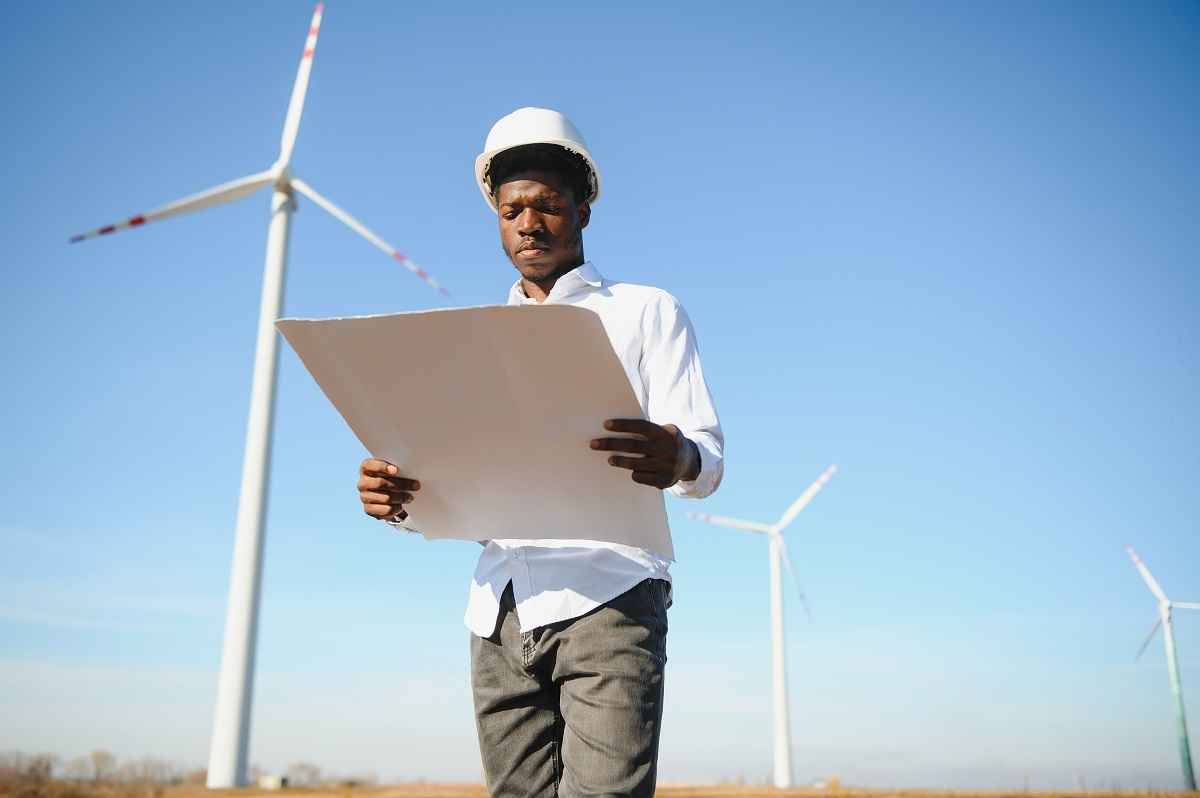What does a Wind Energy Analyst do?
A Wind Energy Analyst is responsible for analyzing wind resources, evaluating wind energy potential, and providing insights and recommendations for wind energy projects. This role is essential for promoting the development of wind energy, optimizing project siting and design, and maximizing energy production from wind turbines.
The primary responsibilities of a Wind Energy Analyst include conducting wind resource assessments, performing wind farm layout optimization, analyzing wind turbine performance data, and providing technical support for wind energy projects. They work closely with project developers, engineers, and stakeholders to ensure the successful implementation of wind energy initiatives.
Wind Energy Analysts use specialized software and tools to analyze wind data, such as wind speed, direction, and variability, collected from meteorological towers, remote sensing devices, and numerical weather prediction models. They perform statistical analysis, wind flow modeling, and turbulence simulations to assess wind energy potential and identify suitable locations for wind projects.
How to become a Wind Energy Analyst
Becoming a Wind Energy Analyst involves a combination of education, experience, and skill development. Here’s a step-by-step guide on how to pursue a career in this field:
- Education: Most Wind Energy Analysts have a bachelor’s or master’s degree in engineering, atmospheric science, renewable energy, or a related field. Coursework in fluid dynamics, meteorology, statistics, and computer modeling is beneficial for understanding wind energy fundamentals.
- Gain Experience: Entry-level positions such as research assistant, data analyst, or field technician are valuable for gaining hands-on experience in wind energy analysis and data interpretation. Internships, co-op programs, or research projects during college can provide valuable exposure to the field.
- Develop Key Skills: Wind Energy Analysts need strong analytical, problem-solving, and technical skills. They should be proficient in data analysis techniques, computer programming, and wind modeling software. Additionally, they should have a deep understanding of wind turbine technology, wind resource assessment methods, and project development processes.
- Industry Knowledge: Familiarity with the wind energy industry and the latest trends and developments is crucial. Wind Energy Analysts should stay informed about advances in wind turbine technology, regulatory policies, and market dynamics to provide accurate and relevant analysis and recommendations.
- Build a Network: Networking with professionals in the wind energy industry can provide valuable insights and job opportunities. Joining industry associations such as the American Wind Energy Association (AWEA) or the European Wind Energy Association (EWEA), attending wind conferences, and participating in wind research collaborations can help expand your network.
- Certifications and Courses: While not always required, certifications can enhance your credentials. Certifications such as the Wind Energy Analyst Certification (WEAC) or the Certified Wind Project Developer (CWPD) demonstrate your expertise in wind energy analysis and project development. Additionally, taking courses or workshops on wind resource assessment, wind farm design, and wind energy economics can provide valuable skills and knowledge.
- Climb the Career Ladder: With experience, Wind Energy Analysts can advance to senior roles such as project manager, technical director, or wind energy consultant. Continuous learning and staying updated with industry trends are essential for career growth in this rapidly evolving field.
By following these steps and continually honing your skills, you can position yourself for a successful career as a Wind Energy Analyst.
Wind Energy Analyst salary
The salary of a Wind Energy Analyst can vary depending on factors such as location, experience, level of education, and the size of the wind energy market. On average, Wind Energy Analysts earn a competitive salary due to the growing demand for wind energy expertise.
In the United States, the median annual salary for a Wind Energy Analyst is approximately $70,000. However, salaries can vary significantly based on factors such as geographic location and market demand. Wind Energy Analysts working in states with abundant wind resources or strong wind energy policies may earn higher salaries.
Experience plays a significant role in determining salary. Entry-level Wind Energy Analyst positions might start around $50,000 per year, but with several years of experience and a proven track record of wind resource assessment and project development, Wind Energy Analysts can see their salaries increase substantially.
Where does a Wind Energy Analyst work?
A Wind Energy Analyst can work in various settings within the wind energy industry, each offering unique opportunities to contribute to the development and optimization of wind energy projects. Here are some common workplaces for Wind Energy Analysts:
- Wind Energy Developers: Many Wind Energy Analysts work for wind energy developers that plan, develop, and operate wind farms. They conduct wind resource assessments, perform site selection and optimization, and support project permitting, financing, and construction activities.
- Engineering Firms: Engineering firms specializing in renewable energy or environmental consulting may employ Wind Energy Analysts to provide technical expertise and support for wind energy projects. They may conduct wind resource modeling, wind farm design, and turbine performance analysis for clients in the wind industry.
- Consulting Firms: Consulting firms offering services in renewable energy consulting, energy economics, or project development may hire Wind Energy Analysts to assist clients with wind energy projects. They may provide feasibility studies, financial analysis, and strategic advice to developers, investors, and government agencies.
- Government Agencies: Wind Energy Analysts may also work for government agencies at the federal, state, or local level, where they support wind energy policies, programs, and incentives. They may conduct wind resource assessments, provide technical assistance to municipalities, or develop wind energy guidelines and regulations.
- Research Institutions: Universities, national laboratories, and research institutions conduct research and development on wind energy technologies, policies, and systems. Wind Energy Analysts in research institutions may work on projects to improve wind resource assessment methods, optimize turbine performance, or advance wind farm design and operation.
- Energy Utilities: Energy utilities or power companies that integrate wind energy into their generation portfolio may employ Wind Energy Analysts to assess wind potential, evaluate wind farm performance, and optimize wind power integration into the grid. They may work on projects to increase renewable energy penetration and reduce carbon emissions.


